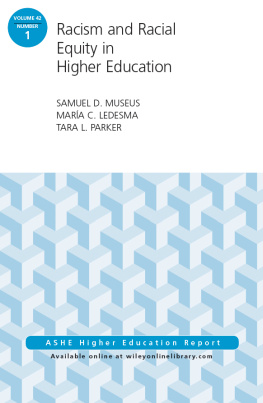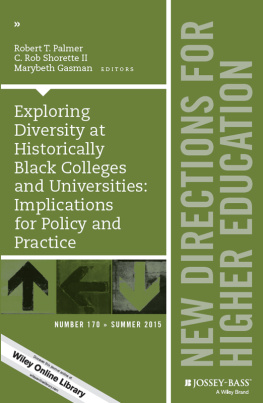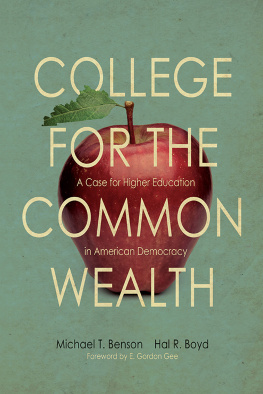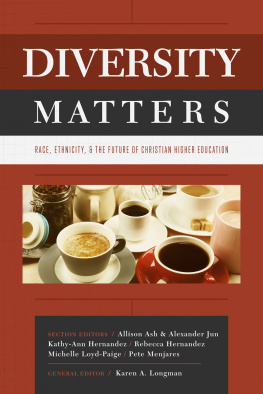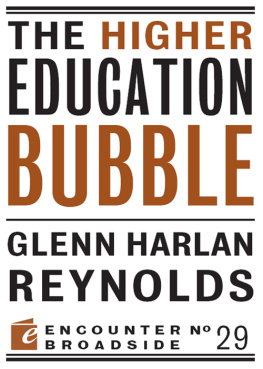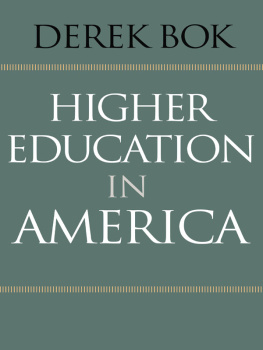Daryl G. Smith - Diversitys Promise for Higher Education: Making It Work
Here you can read online Daryl G. Smith - Diversitys Promise for Higher Education: Making It Work full text of the book (entire story) in english for free. Download pdf and epub, get meaning, cover and reviews about this ebook. year: 2020, publisher: Johns Hopkins University Press, genre: Politics. Description of the work, (preface) as well as reviews are available. Best literature library LitArk.com created for fans of good reading and offers a wide selection of genres:
Romance novel
Science fiction
Adventure
Detective
Science
History
Home and family
Prose
Art
Politics
Computer
Non-fiction
Religion
Business
Children
Humor
Choose a favorite category and find really read worthwhile books. Enjoy immersion in the world of imagination, feel the emotions of the characters or learn something new for yourself, make an fascinating discovery.

- Book:Diversitys Promise for Higher Education: Making It Work
- Author:
- Publisher:Johns Hopkins University Press
- Genre:
- Year:2020
- Rating:5 / 5
- Favourites:Add to favourites
- Your mark:
Diversitys Promise for Higher Education: Making It Work: summary, description and annotation
We offer to read an annotation, description, summary or preface (depends on what the author of the book "Diversitys Promise for Higher Education: Making It Work" wrote himself). If you haven't found the necessary information about the book — write in the comments, we will try to find it.
Building sustainable diversity in higher education isnt just the right thing to doit is an imperative for institutional excellence and for a pluralistic society that works. *Updated Edition*
Daryl G. Smith has devoted her career to studying and fostering diversity in higher education. In Diversitys Promise for Higher Education, Smith brings together research from a wide variety of fields to propose a set of clear and realistic practices that will help colleges and universities locate diversity as a strategic imperative and pursue diversity efforts that are inclusive of the variedand growingissues apparent on campuses without losing focus on the critical unfinished business of the past.
To become more relevant to society, the nation, and the world, while remaining true to their core missions, colleges and universities must continue to see diversitylike technologyas central, not parallel, to their work. Indeed, looking at the relatively slow progress for change in many areas, Smith suggests that seeing diversity as an imperative for an institutions individual mission, and not just as a value, is the necessary lever for real institutional change. Furthermore, achieving excellence in a diverse society requires increasing institutional capacity for diversityworking to understand how diversity is tied to better leadership, positive change, research in virtually every field, student success, accountability, and more equitable hiring practices.
In this edition, which is aimed at administrators, faculty, researchers, and students of higher education, Smith emphasizes a transdisciplinary approach to the topic of diversity, drawing on an updated list of sources from a wealth of literatures and fields. The tables and figures have been refreshed to include data on faculty diversity over a twenty-year period, and the book includes new information about
gender identity,
embedded bias,
student success,
the growing role of chief diversity officers,
the international emergence of diversity issues,
faculty hiring,
and important metrics for monitoring progress.
Drawing on forty years of diversity studies, this third edition also
includes more examples of how diversity is core to institutional excellence, academic achievement, and leadership development;
updates issues of language;
examines the current climate of race-based campus protest;
addresses the complexity of identityand explains how to attend to the growing kinds of identities relevant to diversity, equity, and inclusion while not overshadowing the unfinished business of race, class, and gender.
Daryl G. Smith: author's other books
Who wrote Diversitys Promise for Higher Education: Making It Work? Find out the surname, the name of the author of the book and a list of all author's works by series.

